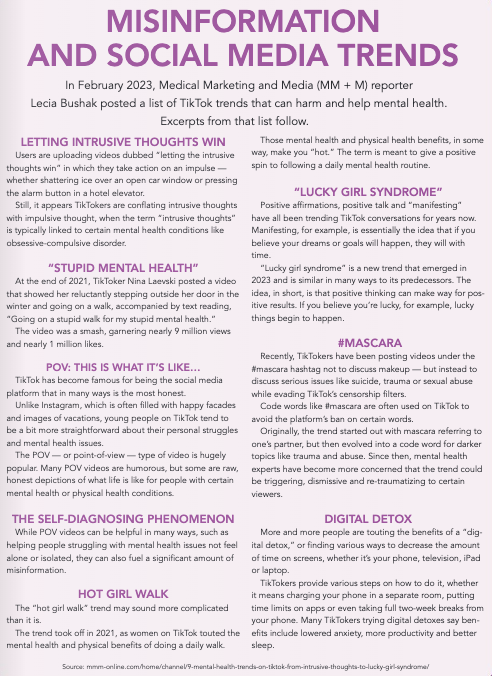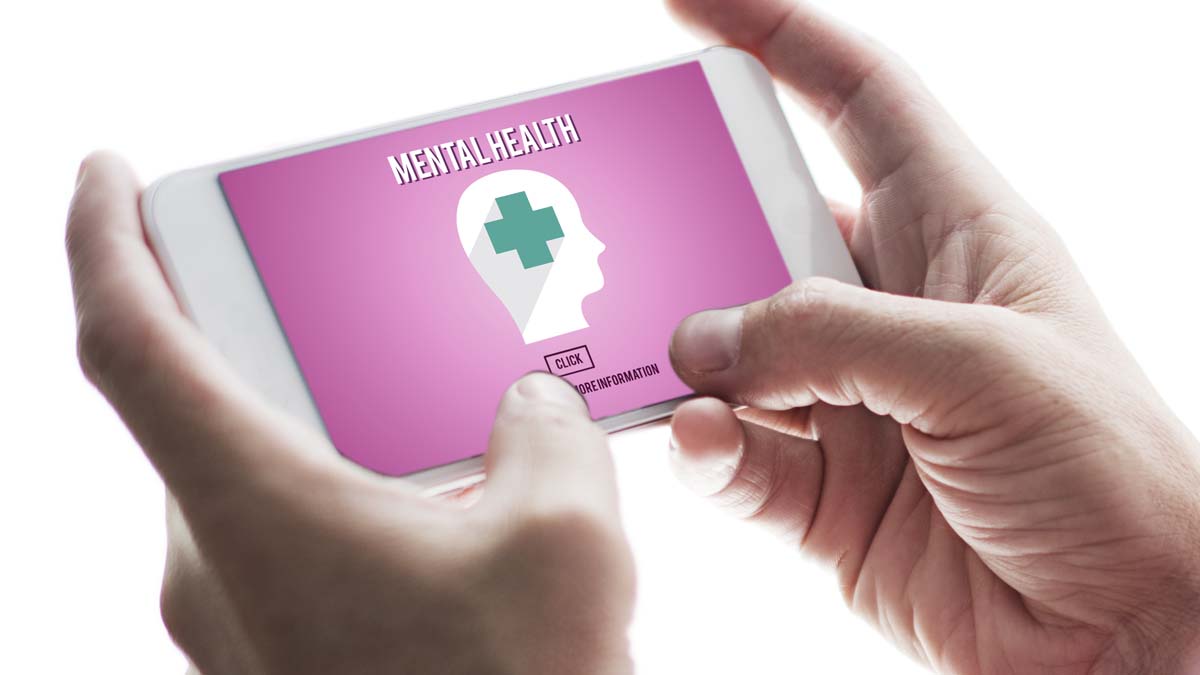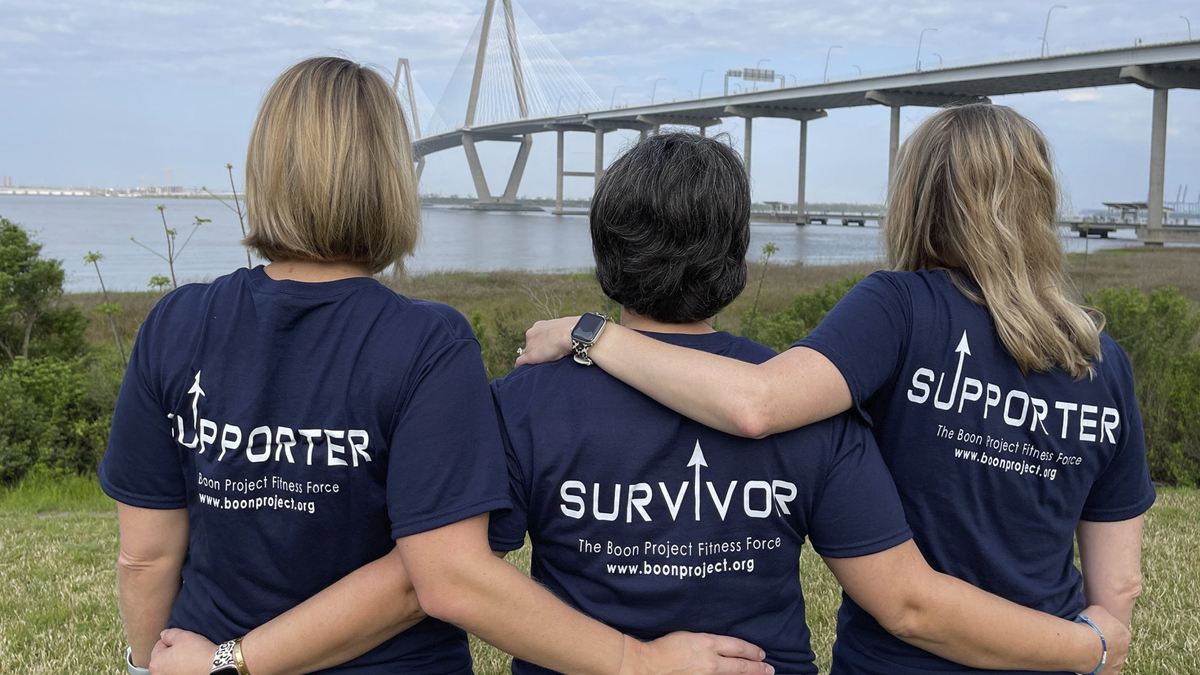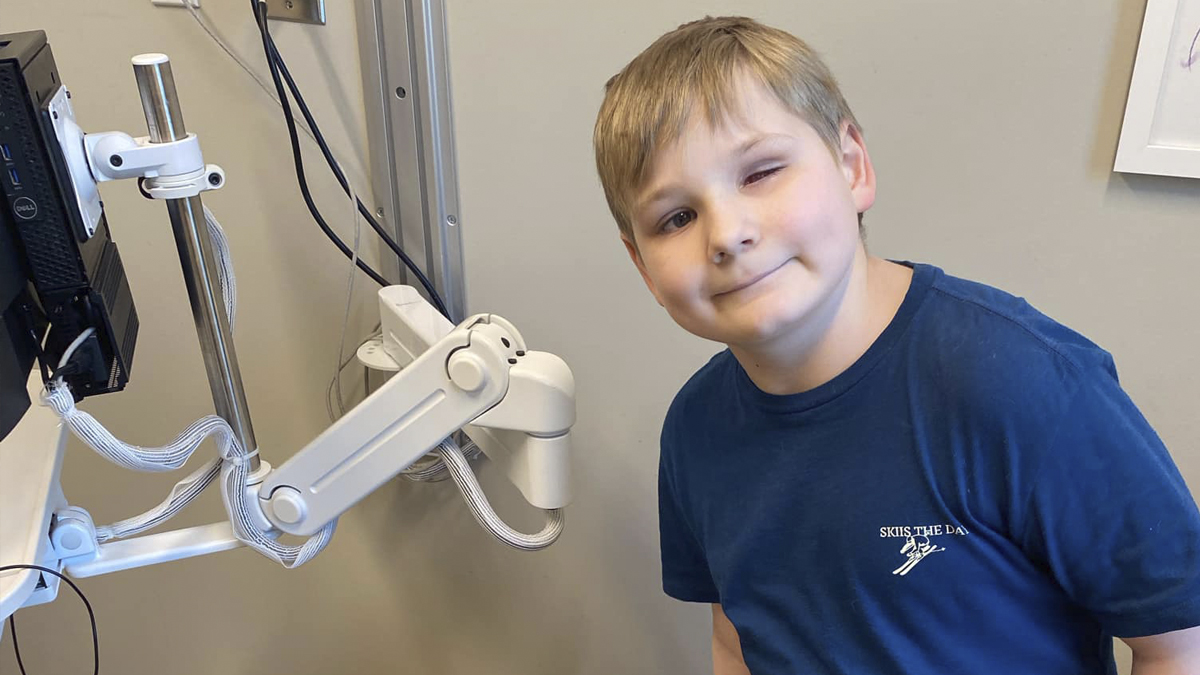Name the day, and a new trend will sweep the nation. Whether the trend is a Stanley cup, Starbucks’ olive oil coffee or Taylor + Kelce hype, something is always buzzing on late night talk shows and social media.
Social media blasts a formidable amount of trendy information about health as well — forest bathing, magnesium supplements, sources to reduce inflammation, to name a few.
While some of the trending health information is positive, much of the information, especially mental health content, can cause more harm than good.
“Virtual health care platform PlushCare recently examined 500 mental health TikTok videos to find out whether most TikTokers were at risk of misinformation, finding that 84% of videos were, in fact, misleading,” reporter Lecia Bushak confirmed in a December 8, 2022 article for Medical Marketing and Media (MM + M).
“While 54% of videos did contain accurate information, the report also found that about 14.2% are so misleading that they could be potentially damaging, like suggesting certain medications without talking to a doctor,” Bushak added.
In an enormous array of videos, people describe their own symptoms of mental health disorders -or even the symptoms of others — which has engendered an increase in self-diagnosis by viewers.
Another contributing factor is what psychologists call “the illusionary truth effect.”
“The more you hear something, the more you believe is it true,” explained Dr. Jeannine Monnier, a licensed clinical psychologist and co-director of Cognitive & Behavioral Health Center of Charleston (C & B). “Eventually, the illusion becomes truth for some people.”
“It has been my experience in clinical practice that self-diagnosis has increased in recent years,” said Dr. Cindy Carter, a licensed clinical psychologist who co-directs C & B with Dr. Monnier. “People come in believing that they have a particular disorder based on information they received in peer-to-peer sharing on social media.”
As harmful as self-diagnosis can be, why it happens is understandable, Dr. Carter noted.
“People can identify with someone who is anecdotally sharing,” she explained. “They pathologize themselves when, in reality, they may be experiencing common emotional or cognitive symptoms are just human experiences that may be unpleasant.”
“The developing brain is more susceptible to social media influence,” added Dr. Monnier. “We have evolved to crave social connections.”
“Just the nature of trending is an important root of the problem,” Dr. Monnier continued. “Repetition is the life blood of misinformation. Couple peer to peer communication and social media algorithms and it is easy for many people to accept hypotheticals as facts. The hotter the topic, the higher the risk of misinformation circulating.”
Attention-deficit/hyperactivity disorder, dissociative identity disorder, obsessive-compulsive disorder, bipolar disorder and borderline personality disorder are all examples of conditions that are commonly discussed on TikTok.
“Often advice about ineffective or effective treatments does not match what research suggests,” Dr. Monnier explained. “For example, for a while, cognitive behavioral therapy trended on social media as ineffective. In reality, cognitive behavioral therapy is very effective for many psychiatric conditions.”
Creating bias against specific therapies, or even therapy in general, sometimes steers people away from getting treatments they need, both doctors noted.
The spread of misinformation has other harmful manifestations as well, including lower trust in the mental health care system and, if people rely solely on misinformation, the decline of their own mental health.
There are several ways to keep yourself in check when it comes to following advice from the social media masses; in turn, as parents, there are effective strategies to protect children.
“It’s important for parents to be role models for how to discern what is true and what is not true,” Dr. Carter said. “It also helps to talk openly about good information and bad information and teach children how to think critically about sources.”
Research supports the strategy of “prebunking,” Dr. Carter added. “This strategy enables parents to prepare children for the impact of misinformation; it involves a conversation about the fact that they will be exposed to it, as well as the importance of talking to others about any social media information that makes them uncomfortable. Prebunking, ultimately, improves children’s resilience.”
Dr. Monnier offered an analogy to highlight the importance of setting boundaries for social media use: “When you go out in public with your child, you watch who they are talking to. If you feel like your child is being misdirected, you reach out on their behalf.”
“With TikTok and other forms of social media, you need to be aware of where they are going. Look over their shoulders,” she added. “Good healthy boundaries are important — the age a child is allowed to use social media, time limits — these are two examples of boundaries to consider.”
In late January, Elmo from “Sesame Street” posted a message just to ask how people were doing.
“The Elmo tweet gathered more than 80,000 likes and nearly 10,000 comments within 24 hours, drawing responses from celebrities and even public health figures — and sparking a conversation about mental health on the platform,” according to an MM + M post.
There is wheat among the information chaff, but without raised awareness about how to spot misinformation on social media and turn away from it, people who need help the most are less likely to get it.
Learn More: cbhealthcenter.com
By Lisa Moody Breslin








